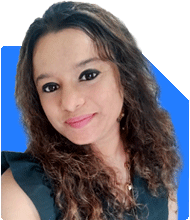How Can a 41-Year-Old With a Family Secure a Comfortable Retirement and Child's Education?
Ramalingam Kalirajan |10891 Answers |Ask -Follow
Mutual Funds, Financial Planning Expert - Answered on Jul 18, 2024
He has an MBA in finance from the University of Madras and is a certified financial planner.
He is the director and chief financial planner at Holistic Investment, a Chennai-based firm that offers financial planning and wealth management advice.... more

I am 41 years old , with In-hand salary of 1.26L , Wife salary 79K , Home loan remaining 22 Laks for 11 years , Started Saving recently in Mutual Funds with Target of 40-50K investment per month , Invested 40K in HDFC small cap fund direct , Quant Focused 30K , Quant infrastructure 35K , quant small cap 60K , 50K in Quant ELss. Please suggest the Investment proportion and suggestive investment amount for comfortable retirement and Child Higher education
You are 41 years old with an in-hand salary of Rs. 1.26 lakhs and your wife earns Rs. 79,000. You have a home loan balance of Rs. 22 lakhs for 11 years. You have recently started investing in mutual funds with a target of Rs. 40-50k per month. Your current investments are:
Rs. 40k in a small cap fund
Rs. 30k in a focused fund
Rs. 35k in an infrastructure fund
Rs. 60k in a small cap fund
Rs. 50k in an ELSS fund
Investment Proportion Analysis
Diversification
Your portfolio is heavily skewed towards small cap and sector-specific funds. This strategy can be risky. Diversification is essential to balance risks and returns. Consider a mix of large cap, mid cap, and hybrid funds. This approach provides stability and growth.
Actively Managed Funds
Actively managed funds can offer higher returns compared to index funds. Fund managers use expertise to navigate market conditions. This advantage can outweigh the typically higher expense ratios.
Regular vs Direct Funds
Investing in regular funds through a Certified Financial Planner (CFP) has benefits. CFPs offer professional advice, ongoing support, and portfolio adjustments. This guidance can help you achieve your financial goals effectively. Direct funds lack this personalized service and can be challenging to manage alone.
Suggested Investment Allocation
Large Cap Funds
Large cap funds provide stability. Allocate 25-30% of your monthly investment here. They are less volatile and offer steady returns over time.
Mid Cap Funds
Mid cap funds offer a balance between risk and return. Allocate 20-25% here. They have the potential for higher growth compared to large caps.
Balanced or Hybrid Funds
These funds combine equity and debt. They provide a cushion against market volatility. Allocate 15-20% of your investments in hybrid funds.
Small Cap and Sectoral Funds
Limit your exposure to small cap and sectoral funds to 20-25%. They can be volatile and should be balanced with more stable investments.
ELSS Funds
ELSS funds offer tax benefits under Section 80C. They also provide growth opportunities. Allocate 10-15% here, considering your tax-saving needs.
Monthly Investment Plan
Given your target of Rs. 40-50k per month, here is a suggested allocation:
Large Cap Funds: Rs. 10-12k
Mid Cap Funds: Rs. 8-10k
Balanced or Hybrid Funds: Rs. 6-8k
Small Cap and Sectoral Funds: Rs. 8-10k
ELSS Funds: Rs. 6-8k
Planning for Retirement and Child's Education
Retirement Planning
Estimate your retirement corpus based on your current lifestyle. Aim for a corpus that can sustain you comfortably. Consider inflation and rising expenses. Start a systematic investment plan (SIP) in diversified funds. Regular reviews with a CFP can keep your plan on track.
Child's Higher Education
Calculate the future cost of education. Consider inflation and rising fees. Start an SIP in diversified funds focused on education goals. ULIPs or other insurance-linked investments may not be ideal. Mutual funds offer better returns and flexibility.
Final Insights
Your current investment strategy is aggressive. Balancing it with large cap and hybrid funds will reduce risk. Investing regularly and reviewing your portfolio periodically is crucial. Consult a Certified Financial Planner for tailored advice. This ensures your goals of comfortable retirement and child's education are met.
Best Regards,
K. Ramalingam, MBA, CFP
Chief Financial Planner,
www.holisticinvestment.in
You may like to see similar questions and answers below
Ramalingam Kalirajan |10891 Answers |Ask -Follow
Mutual Funds, Financial Planning Expert - Answered on May 23, 2024
Jinal Mehta | Answer |Ask -Follow
Financial Planner - Answered on Jun 24, 2024
Ramalingam Kalirajan |10891 Answers |Ask -Follow
Mutual Funds, Financial Planning Expert - Answered on Jul 11, 2024
Ramalingam Kalirajan |10891 Answers |Ask -Follow
Mutual Funds, Financial Planning Expert - Answered on Jul 09, 2025
Radheshyam Zanwar |6746 Answers |Ask -Follow
MHT-CET, IIT-JEE, NEET-UG Expert - Answered on Dec 15, 2025
Ramalingam Kalirajan |10891 Answers |Ask -Follow
Mutual Funds, Financial Planning Expert - Answered on Dec 15, 2025
Ramalingam Kalirajan |10891 Answers |Ask -Follow
Mutual Funds, Financial Planning Expert - Answered on Dec 15, 2025
Ramalingam Kalirajan |10891 Answers |Ask -Follow
Mutual Funds, Financial Planning Expert - Answered on Dec 15, 2025
Samraat Jadhav |2508 Answers |Ask -Follow
Stock Market Expert - Answered on Dec 15, 2025
Ramalingam Kalirajan |10891 Answers |Ask -Follow
Mutual Funds, Financial Planning Expert - Answered on Dec 15, 2025
Reetika Sharma |425 Answers |Ask -Follow
Financial Planner, MF and Insurance Expert - Answered on Dec 15, 2025
Radheshyam Zanwar |6746 Answers |Ask -Follow
MHT-CET, IIT-JEE, NEET-UG Expert - Answered on Dec 15, 2025
Reetika Sharma |425 Answers |Ask -Follow
Financial Planner, MF and Insurance Expert - Answered on Dec 15, 2025
Ramalingam Kalirajan |10891 Answers |Ask -Follow
Mutual Funds, Financial Planning Expert - Answered on Dec 15, 2025























.jpg)